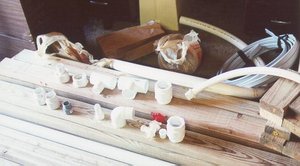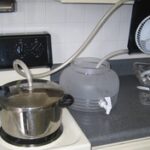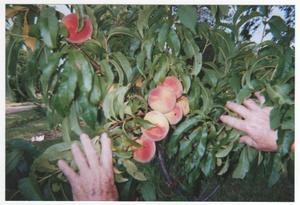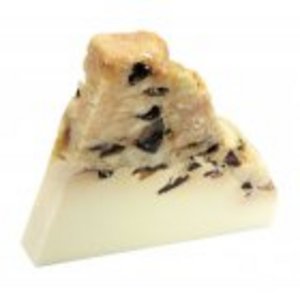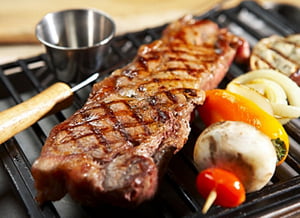PVC pipe is a very light weight alternative to traditional metal piping. It comes in two different colors, for two very different applications. White is generally used for water pipes, while gray is for electrical conduit. This eliminates confusion later, when removing and replacing pipes. It also makes it safer to work with them.
For any project, you will need the following:
* PVC glue
* A sharp hack saw
* A pen
* A good measuring tape
Planning
Planning is the key to a successful project, no matter what you’re undertaking. But it is even more important when working with PVC piping. Once you glue PVC you cannot unglue it if you have made a mistake. For this reason it is very important that you measure carefully and plan thoroughly.
Sketch out what you want to do and make a note of the measurements.
Bear in mind that PVC connectors come in many different shapes, sizes and angles. There should be enough variety to accomplish your project. But, try to go easy on the 90 degree angles. If your project involves water, you will lose pressure around the angles. With electrical conduit, you will find it very hard to pull wire through a 90 degree angle. Use these connectors only if you cannot find any other way around it.
Indicate the placement of any connectors and angles.
Purchase enough PVC and connectors for your project, and maybe a little extra just in case.
Be sure to purchase the appropriate glue. There is special glue for PVC, it only works on PVC, and it really doesn’t glue the PVC it provides a chemical weld that cannot be unglued.
Measure Twice Cut Once
Always measure very carefully. Then re-measure. If you cut off too much you can’t get it back and if you don’t cut off enough it may not fit into your application.
Mark your pipe with the pen, and cut it straight across with the hack saw.
File the rough edges off around the cut. This will allow for a better connection and prevent leakage.
Assembly
Assemble your pipes and connectors. Do not glue anything yet. Test fit everything. Make sure that every piece is going to work the way you want it to. This is extremely important, because once it’s glued, it’s there for good.
Once you have checked for fit, carefully glue the pieces together. You will want to place glue all the way around the outside of the pipe and let it sit for a couple of seconds, then place glue around the inside of the pipe. Carefully slide the pipe into the connector and hold it until it is set. Be sure you have it in the position you want, because once it’s together nothing will coax the two pieces apart.
Working with PVC Glue
* don’t get glue on your skin, it burns
* always work with your glue in a well ventilated area, the vapors can be toxic
* only glue PVC to PVC.
Finishing Your Project
Test your water pipes by running water through them and checking for leaks. Pay special attention to the connectors. If you discover a leak, caulking works very well to fix it. PVC glue does not work once the water has been run through the pipes.
For your conduit project, you may reapply glue to the connectors to establish a better seal. You want your conduit sealed against the elements to protect your electrical wiring.
Once you’ve repaired any leaks, close your glue tightly and pick up any left over pipes and connectors. Be sure to wipe up any spilled glue and keep it away from pets and children.
A well planned project will make your experience with PVC a pleasant and safe one.
